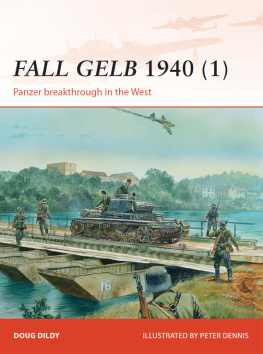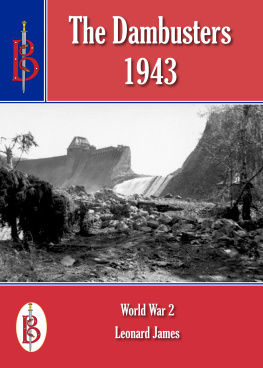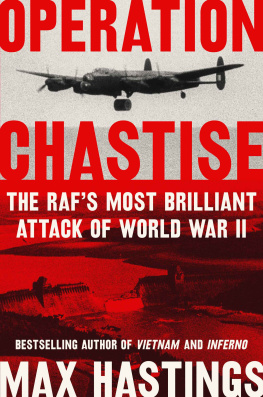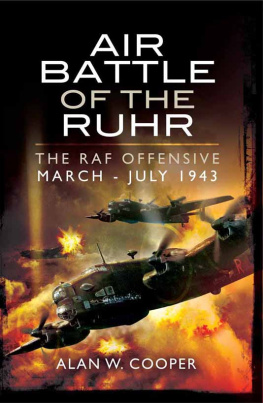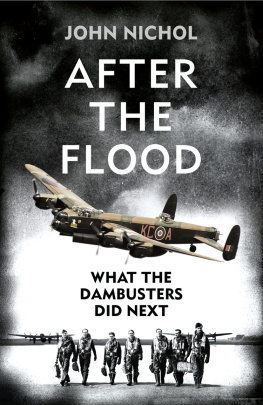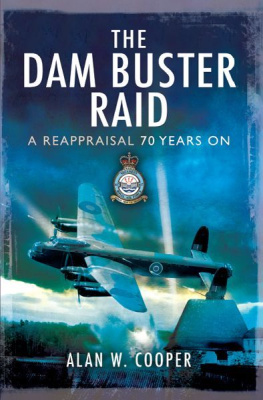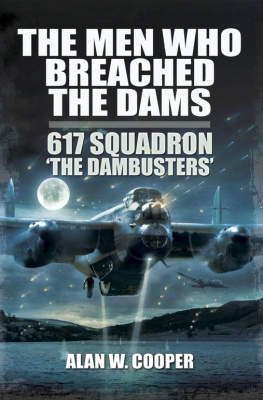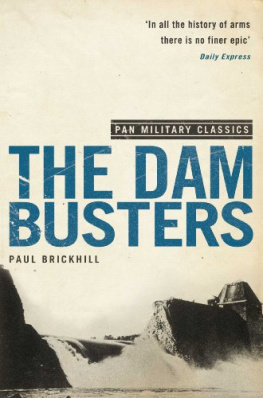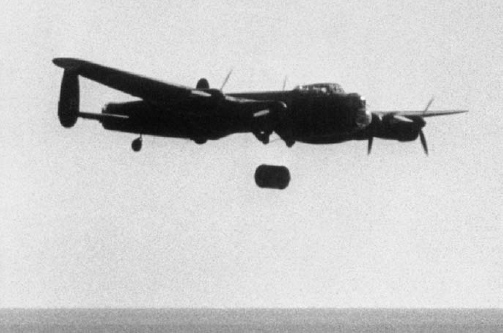DAMBUSTERS
Operation Chastise 1943
DOUGLAS C. DILDY
CONTENTS
INTRODUCTION
There can be no doubt that we must be prepared for long distance aerial operations against an enemys main source of supply.
Air Marshal Sir Hugh Trenchard, GCB, OM, GCVO, DSO, upon becoming Chief of Air Staff (second time), 31 March 1919
The Dams Raid by the RAFs No 617 Squadron, during the horrific chaos and combat in the midst of World War II, remains a larger-than-life event even after almost seven decades of subsequent history. It was a tremendous technological achievement almost unparalleled in military aviation history the synergistic culmination of innovative weapons science, imaginative and high-risk weapons delivery technique, meticulous planning, intensive training and daring execution. Its technological success and exceptionally high level of sacrifice in achieving that coupled with the almost immediate heavy-handed propaganda and public-relations offensive surrounding it have probably all assured Operation Chastise a place in history long after all other significant World War II achievements barring perhaps the D-Day landings in Normandy have faded into obscurity.
Consequently, the Dambusters Raid of 1943 has become the subject of English lore and RAF legend of almost Arthurian proportions. It has been written about more than any other single air operation, easily eclipsing the American Doolittle Raid which was very similar in many respects the year before. Because of the raids iconic status, most of the literature on Chastise has favoured myth, mystery and misinformation, largely parroting wartime propaganda and lavishly expounding on the militarily insignificant, rather than providing an objective assessment of the event. It is hoped that this book, by closely examining Operation Chastise as a military operation, will concisely tell the complete story in the most historically significant way.
To do this we must first know just what the raid was designed to achieve. A review of the original files on Chastise, held at the UK National Archives in Kew, England, reveals that the operation was aimed at strategic objectives on the economic, morale and political levels.
Economically the RAF hoped to interrupt the Nazi Reichs steel and armaments production centred primarily in the heavily industrialized Ruhr Valley region by flooding factories, damaging transport infrastructure (flooding canals and washing away bridges), and disrupting the supply of water (it was estimated that for each ton of steel produced, eight tons of water were required for cooling huge steel furnaces and thermal powerplants) and the supply of power from hydro-electric powerplants associated with the dams. It was hoped that interrupting steel production would have an immediate if only temporary effect on the manufacture of tanks, army and anti-aircraft artillery, and other heavy military equipment.
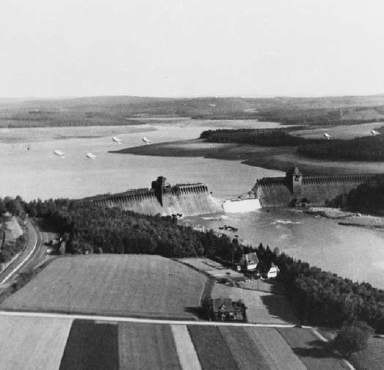
Aprs moi, le deluge (after me, the deluge). The dramatic results of a precision airstrike against what was seen as a vital strategic element of the Third Reichs heavy armaments industry: theMhneDamtheday after617Sqn Lancasters attacked it with five Upkeep anti-dam depth charges. A little too late, that morning the Germans placed barrage balloons overhead. (UK National Archives Photo AIR 20/4367)
In terms of morale, the operation had two aims. The first was spreading panic among the population [and] lowering of enemy morale; specifically in this case, it aimed to demoralise the workers in the steel mills and armaments factories and dissuade them from coming to work for der Fhrer and das Vaterland. The second aim related to the British home front. In the light of the long and disillusioning first three years of actual warfare against the Nazi regime, the lack of physical engagement with the Wehrmacht in anything but a peripheral theatre (North Africa), the huge maritime supply-line losses to the Kriegmarines ravaging U-boats, and the depressingly high RAF aircrew losses in the rather ineffective ongoing bomber offensive, a notable success was needed. The accomplishment of such a high-profile air operation, combining the very best elements of what were seen as the British national character, would provide a morale-boost at home out of all proportion to the costs and the actual achievements of this risky raid.
The third and most hoped-for major aim and the primary reason for the considerable amount of propaganda accompanying the operation related to the highest levels of British government. This was the positive influence this unique military feat would have on Britains allies. The Soviets had yet to achieve dominance on the Eastern Front and Stalin was clamouring for the Western allies (Great Britain and the USA) to open a second front against the enemy. The impatient and sometimes impetuous Americans lacked confidence in British military leadership, technology, tactics and techniques, given Britains disappointing record of misadventure in the first three years of the war. A dramatically successful high-profile aerial operation would do much to solidify the support of Britains two main allies in pursuing the war to a victorious conclusion.
It is against these fairly concisely proscribed if somewhat nebulously defined objectives that Operation Chastise should ultimately be judged.
ORIGINS
The time has arrived when we should make arrangements for the destruction of the Mhne Dam.
Air Marshal Sir Charles Portal, Air Officer Commanding-in-Chief of Bomber Command, to Under-Secretary of State for Air Harold Balfour, MC, 3 July 1940
Target: the Ruhr
The Ruhr River basin developed into Germanys major industrial centre early in the modern historical period, thanks to the many nearby iron mines in the hills to the south, the availability of water (for drinking, industrial processes and transportation of heavy finished goods), the abundance of wood (as fuel for furnaces and foundries) and, later, the discovery of huge adjacent coal deposits. This combination of factors led to a burgeoning production of steel during the later 19th century that supplied armour plate and heavy guns to the Kaisers expanding Hochseeflotte (High Seas Fleet). In the 1920s and 1930s a resurgent steel and armaments industry produced vast quantities of naval, flak and army artillery; tanks and other armoured vehicles; and petrol (gasoline) and Diesel engines powering the Fhrers new mechanised Wehrmacht. In short, the Ruhr produced most of what was required to pursue Hitlers offensive strategies.
The industries of the Ruhr of which the massive Krupp complex at Essen was the most famous were spread across seven large cities, from Duisburg on the Rhine to Dortmund in the east, which all developed in or to the north of the Ruhr basin. To the south, rising rather abruptly some 1,250ft (400m) from the Ruhr basin and the southern reaches of the north German plain, was the Rheinisches Schiefergebirge (Rhine Massif) a heavily wooded plateau of roughly hewn valleys and gently rolling ridges with peaks reaching to 2,750ft (840m). The mines burrowing into this great forested massif supplied the raw materials (iron and coal) for the Ruhr industries and from its folds flowed the tributaries of the two major rivers the Ruhr and the Lenne that supplied both water and hydro-electric power to the cities below.


